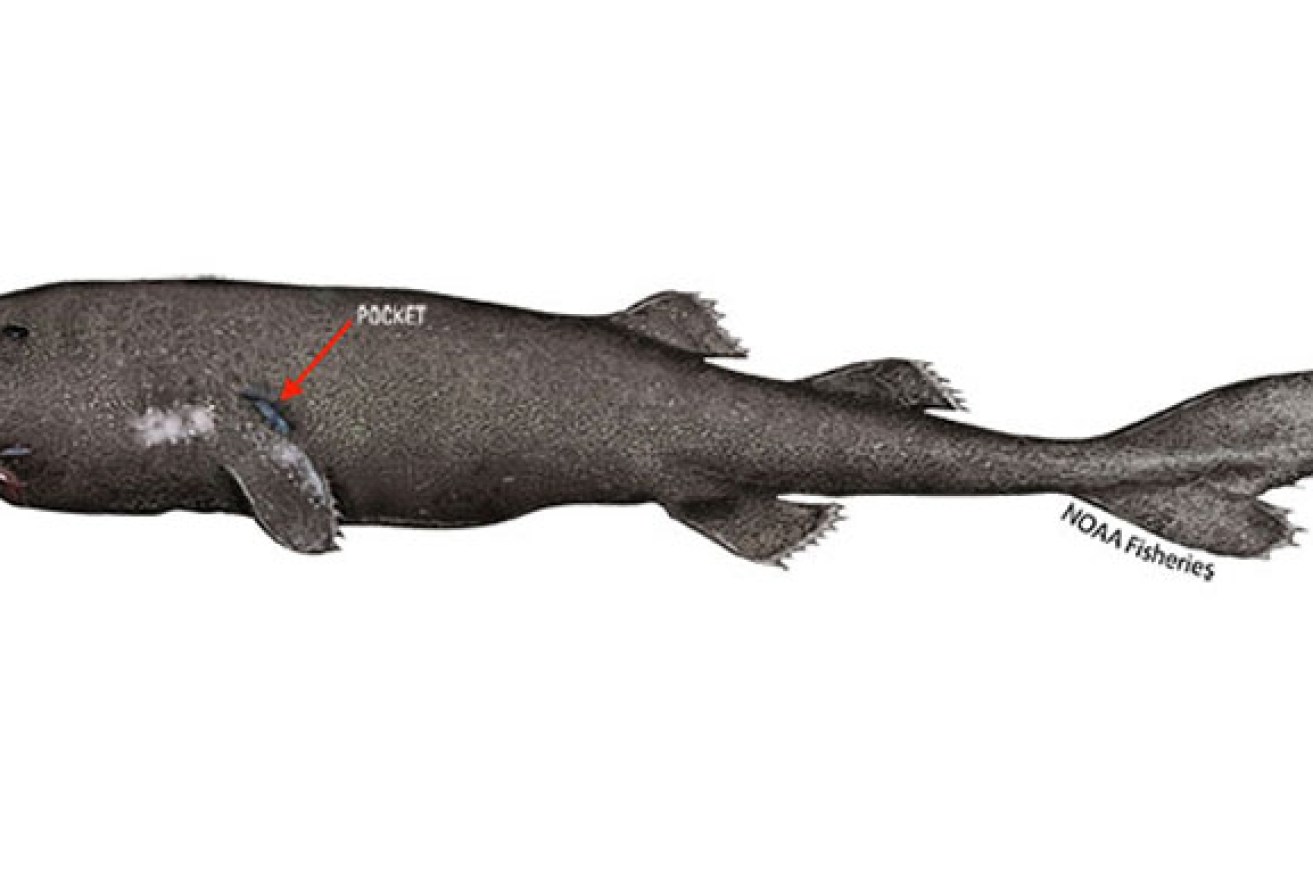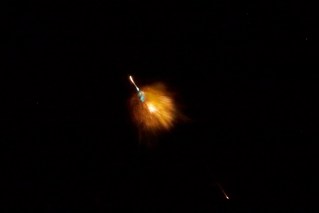Extremely rare pocket shark found in frozen fish


NOAA
Scientists have discovered only the second-ever specimen of a creature known as the ‘pocket shark’, after it was found in a slab of fish thawed out after five years of storage.
The species was first discovered near the Nazca Ridge off Peru’s coast in 1984 when a larger female was caught.
Swelling observed on the shark suggests the shark was up to half-a-kilometre below the surface of the water when it was caught.
• Huge stingray chews diver’s head: video
• Queensland farmer discovers Kronosaurus jaw
• Is this the sharkiest paradise on the planet?
The Mollisquama gets its name from the mysterious gland above its pectoral fin which looks pocket-like, not its size.

Swelling on this specimen suggests the pocket shark could be a deep-sea dweller. Photo: M. Doosey/Tulane University.
Researchers from the National Oceanic and Atmospheric Administration in the United States found the fish for the first time in the Gulf of Mexico, “establishing a considerable range extension,” an NOAA report published in Zootaxa found.
The report found the pocket was “unique” among fish like sharks which have a lot of cartilage, and “and may only be comparable to the luminous abdominal pouch” of a species of Dilatiid shark, which excretes a blue luminescent fluid from a luminous abdominal pouch.
The 15 centimetre juvenile male shark showed a recently healed umbilical scar, raising questions of where its parents may be and to what scale the population has grown.
But it is considered among the rarest of this type of shark, the report stated.
Further mysteries persist, as the new specimen suffered swelling when it was landed.
That has begged the question whether the swelling was due to the depth which the shark usually dwells.
One possible answer floated in the report was that the shark could have been caught up to 560 metres underwater at the trawl’s maximum depth.
The difference in temperatures, water pressures and the amount of oxygen dissolved in the shark’s body were considered as the causes of swelling, suggesting the shark was considerably deep at the time it was caught.

The shark takes its name from the pocket behind its pectoral fin. Photo: M. Grace/NOAA/NMFS/SEFSC/Mississippi Laboratories.








